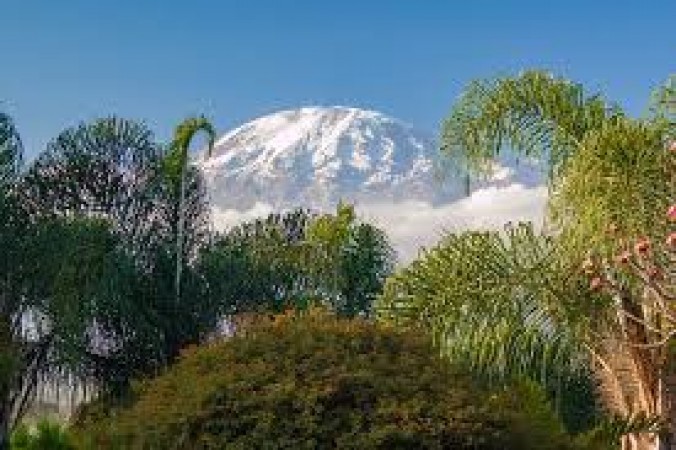
Mount Kilimanjaro, often referred to as the "Roof of Africa," is one of the most iconic and majestic natural wonders in the world. This dormant stratovolcano is renowned for its snow-capped peaks and breathtaking beauty, attracting adventurers, nature enthusiasts, and trekkers from across the globe. In this article, we will explore the location, geography, climate, and the unique aspects of Mount Kilimanjaro, as well as the experience of trekking to its summit.
The Geographic Location of Mount Kilimanjaro
Mount Kilimanjaro is situated in the northeastern part of Tanzania, East Africa. Its precise coordinates are approximately 3.07° S latitude and 37.35° E longitude. The mountain is nestled near the border with Kenya, making it a prominent landmark in the region.
Tanzania: Home to Africa's Highest Peak
Tanzania, a country renowned for its rich cultural heritage and diverse wildlife, proudly hosts Mount Kilimanjaro. The mountain's location within Tanzania's Kilimanjaro National Park has granted it the status of a UNESCO World Heritage Site.
Kilimanjaro's Unique Landscape
Mount Kilimanjaro stands at an impressive height of 5,895 meters (19,341 feet) above sea level, making it the highest free-standing mountain in the world. Its unique landscape encompasses lush rainforests, alpine meadows, and a barren arctic summit. This distinct array of ecosystems is a result of the mountain's exceptional elevation.
The Climate of Mount Kilimanjaro
Due to its varying elevations, Mount Kilimanjaro experiences different climate zones. At the lower levels, the weather is typically warm and humid, fostering dense rainforests with diverse flora and fauna. As climbers ascend, they transition through the heather and moorland zones, eventually reaching the snow-capped summit. This diversity in climate and vegetation is a significant draw for tourists and researchers alike.
The Ecological Zones of Kilimanjaro
The ecological zones of Mount Kilimanjaro are divided into five distinct regions. Each zone boasts its own unique set of plants and animals, contributing to the mountain's ecological significance. These zones, in ascending order, are the cultivation zone, the rainforest zone, the heath and moorland zone, the alpine desert zone, and the arctic zone.
Wildlife on Mount Kilimanjaro
Despite the challenging conditions, Mount Kilimanjaro is home to various species of wildlife. The rainforest zone is particularly rich in biodiversity, with elephants, buffalos, leopards, and monkeys being some of the charismatic inhabitants. Birdwatchers are delighted by the numerous avian species that thrive on the mountain.
The Myth and Magic of Kilimanjaro
Mount Kilimanjaro holds deep cultural and spiritual significance for the local Chagga people, who have lived at the mountain's base for centuries. They believe that the mountain is a home to gods and spirits, and it plays a vital role in their folklore and traditions. Kilimanjaro's allure also extends to the realm of literature, with writers and explorers captivated by its mystery and allure.
Trekking to Kilimanjaro's Summit
Trekking to the summit of Mount Kilimanjaro is an extraordinary adventure that attracts intrepid travelers seeking to conquer its peaks. The most popular routes include the Marangu, Machame, Lemosho, Rongai, and the Northern Circuit routes. Each path offers a unique perspective of the mountain and its surroundings.
Preparing for the Ascent
While climbing Mount Kilimanjaro doesn't require specialized mountaineering skills, it demands physical fitness, mental preparation, and proper acclimatization. Aspiring climbers are advised to undergo thorough training, obtain the necessary gear, and choose a reputable tour operator to ensure a safe and successful ascent.
Challenges and Considerations
The ascent to Kilimanjaro's summit is not without its challenges. Altitude sickness poses a significant risk to climbers, and the changing weather conditions can be unpredictable. Responsible trekking practices and sustainable tourism are essential to preserve the mountain's beauty and protect its delicate ecosystem.
The Importance of Responsible Tourism
As the popularity of climbing Mount Kilimanjaro increases, so does the impact on the environment and local communities. Responsible tourism is crucial in ensuring that the mountain's resources are preserved for future generations. Tour operators, travelers, and park authorities must work together to minimize their ecological footprint.
Kilimanjaro's Impact on Local Communities
The influx of tourists brings both economic opportunities and challenges to the local communities surrounding Mount Kilimanjaro. It is essential for the tourism industry to benefit local residents and promote cultural exchange while respecting their traditions and way of life.
Conservation Efforts and Future Sustainability
Various organizations and governments are committed to preserving the ecological integrity of Mount Kilimanjaro. Conservation efforts include reforestation initiatives, waste management, and sustainable tourism practices. By safeguarding this natural wonder, we can ensure its beauty remains intact for generations to come. Mount Kilimanjaro's location, unique landscape, and cultural significance make it an unparalleled destination for adventurers and nature lovers. Climbing this majestic mountain is a transformative experience, providing trekkers with a sense of accomplishment and a connection to nature's grandeur. As we explore Kilimanjaro's wonders, let us remember the importance of responsible tourism and conservation, ensuring that this remarkable peak remains an awe-inspiring sight for centuries.
Sidhu Moosewala Murder Case: Sachin Bishnoi Extradited to India from Azerbaijan
Intellectuals Unite: Global Outcry for Release of Writer Badri Seshadri
Brookfield and Reliance Industries Join Forces to Power Australia's Green Future